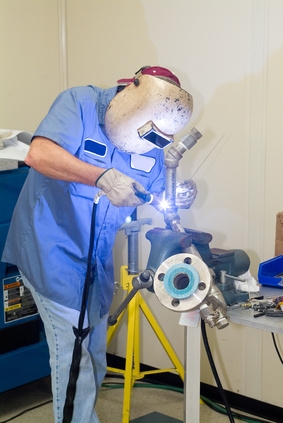
MIG (metal inert gas) welding involves the sealing and joining of non-ferrous metals such as aluminum. This type of welding was first used in the 1940s and has remained a mainstay of light metal welding for decades.
MIG welding uses a wire hooked up to electricity with a direct current. The electrical current jumps, or arcs, when the welding gun is connected with metals that need to be joined. As the gun gets activated, the current runs hot enough to melt the metals temporarily so they can be physically joined.
To prevent contaminants from entering the weld, a MIG welding gun also incorporates an inert gas as the weld takes place. The gas, historically argon in earlier years, gets inserted as the electrical current burns. The gas forms a temporary shield, blocking contaminants from getting into the new weld and potentially compromising it.
MIG welding provides an advantage over traditional welding since it fuses much faster. This allows welding jobs to be completed easily and quickly on soft metals that would otherwise melt too much with a longer, hotter welding approach. Additionally, MIG welding provides a nice, long seam rather than short spot welds. It also doesn't splatter as much.